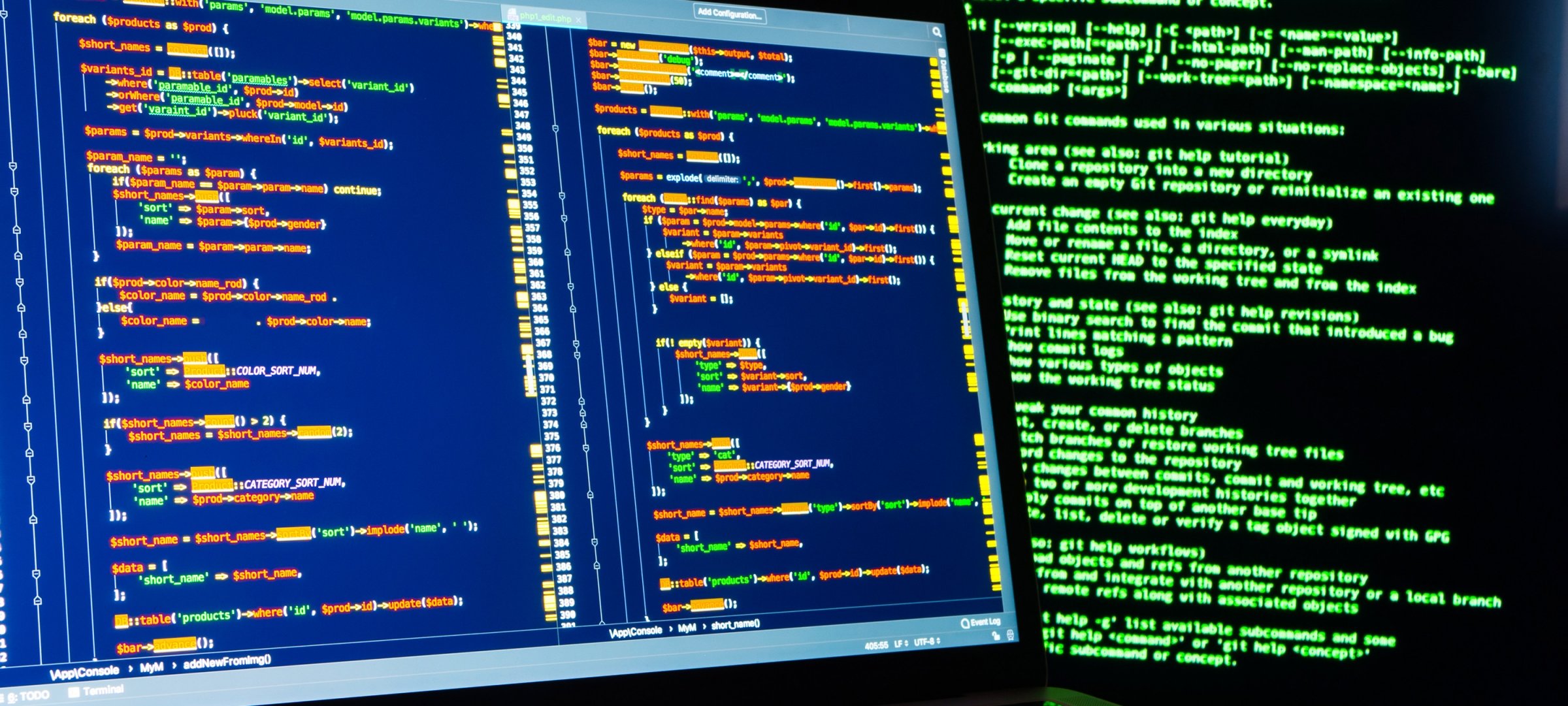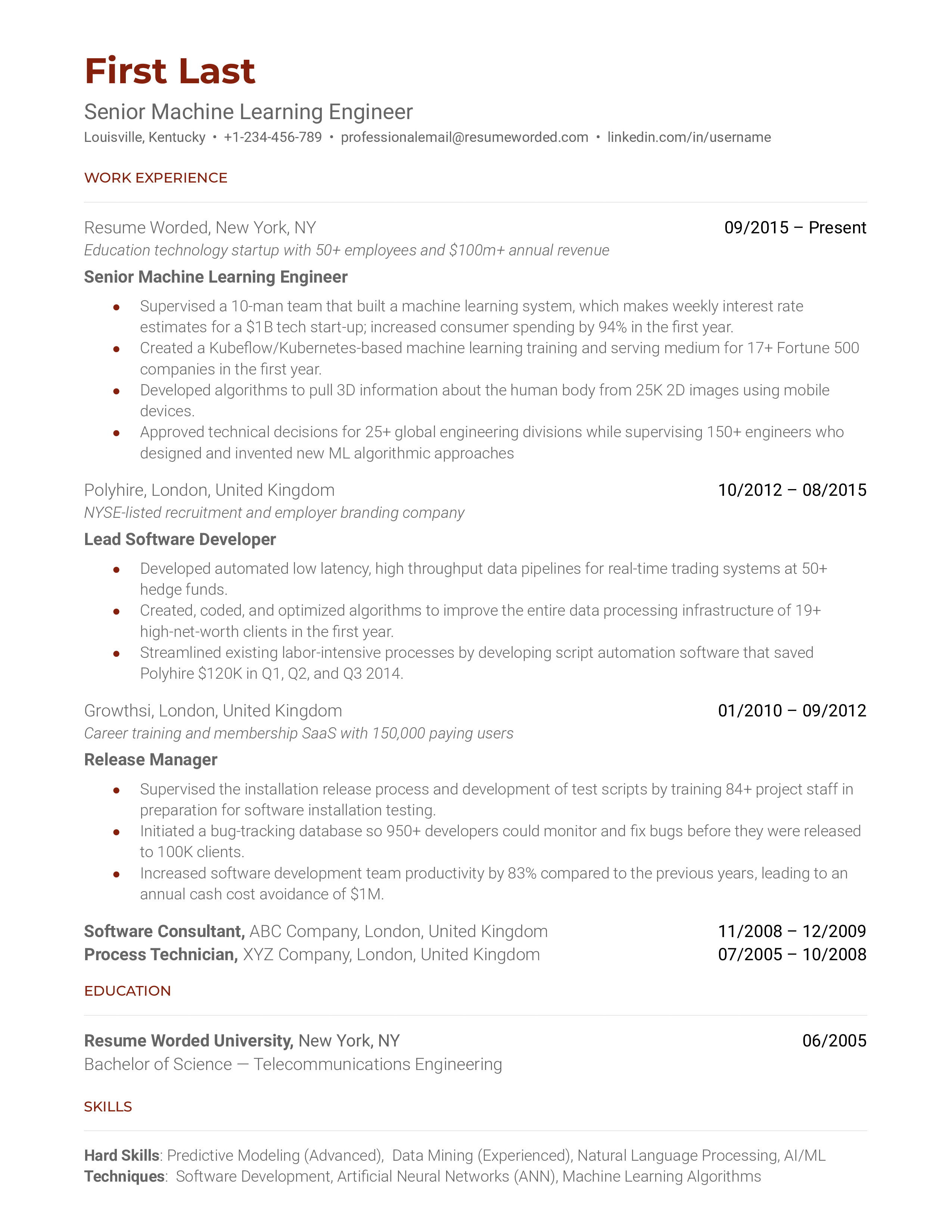All Categories
Featured
Table of Contents
- – About Software Engineering Vs Machine Learning...
- – The 20-Second Trick For Machine Learning In Pr...
- – Rumored Buzz on 19 Machine Learning Bootcamps...
- – Getting My Best Machine Learning Courses & Ce...
- – Get This Report about Generative Ai Training
- – Top Guidelines Of Aws Machine Learning Engin...
You probably know Santiago from his Twitter. On Twitter, every day, he shares a whole lot of functional things concerning machine learning. Alexey: Before we go right into our main subject of relocating from software application design to machine knowing, possibly we can start with your background.
I went to university, obtained a computer system scientific research level, and I began developing software application. Back then, I had no idea regarding maker learning.
I know you've been using the term "transitioning from software engineering to equipment knowing". I such as the term "including in my ability the artificial intelligence skills" more since I assume if you're a software application engineer, you are already giving a great deal of value. By including artificial intelligence currently, you're boosting the influence that you can have on the sector.
Alexey: This comes back to one of your tweets or perhaps it was from your training course when you compare 2 techniques to learning. In this case, it was some trouble from Kaggle concerning this Titanic dataset, and you just find out how to resolve this trouble using a certain device, like decision trees from SciKit Learn.
About Software Engineering Vs Machine Learning (Updated For ...
You first find out mathematics, or linear algebra, calculus. When you know the mathematics, you go to machine learning concept and you find out the theory. Four years later on, you ultimately come to applications, "Okay, how do I utilize all these four years of mathematics to solve this Titanic issue?" ? So in the previous, you sort of conserve on your own time, I believe.
If I have an electric outlet right here that I need changing, I do not wish to go to college, spend 4 years understanding the mathematics behind power and the physics and all of that, just to alter an outlet. I would rather begin with the outlet and discover a YouTube video that helps me undergo the issue.
Bad analogy. You get the concept? (27:22) Santiago: I actually like the idea of beginning with a trouble, attempting to toss out what I know up to that issue and comprehend why it doesn't work. Then get the devices that I need to address that issue and begin excavating much deeper and much deeper and deeper from that factor on.
That's what I normally advise. Alexey: Maybe we can talk a little bit regarding learning sources. You mentioned in Kaggle there is an introduction tutorial, where you can get and learn just how to make decision trees. At the beginning, before we started this interview, you stated a number of books too.
The only requirement for that program is that you know a little bit of Python. If you go to my account, the tweet that's going to be on the top, the one that says "pinned tweet".
The 20-Second Trick For Machine Learning In Production / Ai Engineering

Also if you're not a designer, you can start with Python and work your way to even more machine understanding. This roadmap is concentrated on Coursera, which is a system that I truly, actually like. You can examine every one of the courses for cost-free or you can pay for the Coursera registration to obtain certificates if you intend to.
That's what I would do. Alexey: This returns to one of your tweets or maybe it was from your program when you contrast two strategies to knowing. One approach is the trouble based technique, which you simply spoke about. You discover a problem. In this situation, it was some trouble from Kaggle concerning this Titanic dataset, and you simply learn how to resolve this trouble using a details tool, like choice trees from SciKit Learn.

You first discover math, or direct algebra, calculus. When you know the math, you go to device understanding concept and you find out the theory.
If I have an electric outlet below that I require changing, I do not intend to go to college, spend 4 years comprehending the math behind power and the physics and all of that, just to change an outlet. I would instead begin with the electrical outlet and discover a YouTube video clip that assists me undergo the trouble.
Bad analogy. But you understand, right? (27:22) Santiago: I actually like the concept of starting with a trouble, attempting to toss out what I understand up to that trouble and recognize why it doesn't work. Then get hold of the devices that I need to solve that trouble and begin digging deeper and much deeper and deeper from that factor on.
Alexey: Perhaps we can chat a bit concerning finding out sources. You pointed out in Kaggle there is an intro tutorial, where you can get and discover exactly how to make decision trees.
Rumored Buzz on 19 Machine Learning Bootcamps & Classes To Know
The only demand for that training course is that you understand a little bit of Python. If you go to my profile, the tweet that's going to be on the top, the one that claims "pinned tweet".
Also if you're not a designer, you can start with Python and work your means to even more equipment discovering. This roadmap is focused on Coursera, which is a platform that I truly, actually like. You can investigate every one of the programs totally free or you can pay for the Coursera membership to get certifications if you wish to.
Getting My Best Machine Learning Courses & Certificates [2025] To Work
To ensure that's what I would certainly do. Alexey: This returns to among your tweets or perhaps it was from your training course when you compare 2 methods to learning. One method is the issue based method, which you simply spoke about. You discover a trouble. In this instance, it was some issue from Kaggle regarding this Titanic dataset, and you simply learn how to address this problem utilizing a specific tool, like choice trees from SciKit Learn.

You initially discover math, or linear algebra, calculus. When you understand the math, you go to machine understanding concept and you find out the concept.
If I have an electric outlet right here that I need changing, I do not intend to go to college, spend 4 years recognizing the mathematics behind power and the physics and all of that, simply to change an electrical outlet. I would rather begin with the outlet and discover a YouTube video that assists me undergo the problem.
Santiago: I really like the concept of starting with an issue, trying to toss out what I understand up to that problem and understand why it doesn't work. Order the devices that I need to address that problem and start digging deeper and much deeper and deeper from that point on.
Alexey: Possibly we can talk a little bit about finding out resources. You stated in Kaggle there is an introduction tutorial, where you can obtain and discover exactly how to make decision trees.
Get This Report about Generative Ai Training
The only requirement for that program is that you know a little bit of Python. If you go to my account, the tweet that's going to be on the top, the one that states "pinned tweet".
Even if you're not a designer, you can start with Python and function your means to more equipment learning. This roadmap is concentrated on Coursera, which is a platform that I really, actually like. You can investigate all of the programs totally free or you can spend for the Coursera subscription to obtain certificates if you wish to.
To make sure that's what I would do. Alexey: This returns to one of your tweets or perhaps it was from your course when you compare two techniques to understanding. One approach is the trouble based technique, which you just discussed. You locate a trouble. In this case, it was some trouble from Kaggle concerning this Titanic dataset, and you just discover how to resolve this issue utilizing a certain tool, like decision trees from SciKit Learn.
You initially learn math, or linear algebra, calculus. When you recognize the math, you go to machine understanding concept and you find out the concept.
Top Guidelines Of Aws Machine Learning Engineer Nanodegree
If I have an electric outlet below that I require replacing, I don't wish to go to university, spend four years recognizing the math behind power and the physics and all of that, just to transform an electrical outlet. I prefer to begin with the electrical outlet and discover a YouTube video clip that assists me go via the problem.
Santiago: I really like the idea of starting with a problem, attempting to throw out what I know up to that problem and recognize why it does not function. Grab the devices that I require to solve that problem and start excavating much deeper and much deeper and much deeper from that factor on.

To make sure that's what I generally recommend. Alexey: Maybe we can speak a bit concerning learning resources. You pointed out in Kaggle there is an intro tutorial, where you can obtain and discover how to choose trees. At the beginning, before we started this meeting, you discussed a number of publications as well.
The only demand for that program is that you know a little bit of Python. If you go to my profile, the tweet that's going to be on the top, the one that states "pinned tweet".
Also if you're not a designer, you can begin with Python and function your method to even more maker discovering. This roadmap is concentrated on Coursera, which is a system that I actually, truly like. You can investigate all of the programs absolutely free or you can spend for the Coursera subscription to get certificates if you desire to.
Table of Contents
- – About Software Engineering Vs Machine Learning...
- – The 20-Second Trick For Machine Learning In Pr...
- – Rumored Buzz on 19 Machine Learning Bootcamps...
- – Getting My Best Machine Learning Courses & Ce...
- – Get This Report about Generative Ai Training
- – Top Guidelines Of Aws Machine Learning Engin...
Latest Posts
How To Use Openai & Chatgpt To Practice Coding Interviews
The Best Youtube Channels For Coding Interview Preparation
The Best Programming Books For Coding Interview Prep
More
Latest Posts
How To Use Openai & Chatgpt To Practice Coding Interviews
The Best Youtube Channels For Coding Interview Preparation
The Best Programming Books For Coding Interview Prep